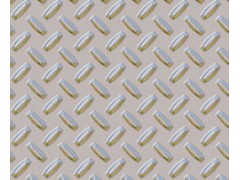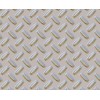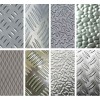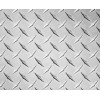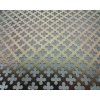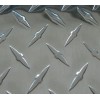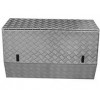Checkered diamond pattern metal sheet is the most widely used and most common anti-slippery tread plate and stair covering material. Diamond tread plate is ideal for walkways. The raised part of the checkered metal plates makes the walking very comfortable. It is equally applicable to many areas, such as walkways, bracket plate, attic, stair treads and so on. It can be used in all slight anti-slip flooring needs.
Materials for Anti-skipping tread plate: Iron, stainless steel, galvanized steel, aluminum.
Choosing the Right metal Plate Thickness for Stamping Slip-Resisting Checkered Tread Plate:
Stamping chequer process: After two CNC punching, stamping, but not perforated through. To form raised or embossed patterns and designs on one surface of the metal plate, but on holes going through the stamped sheets.
Thus the stamped checkered tread plate needs metal sheet material with proper thickness. If the plate is too thin, it will get punched through easily and leave opening on the sheet. If the metal plate is too thick, it is hard to get chequers on the surface.
The common metal sheet thickness for checkered tread plate: between 1.2-1.8mm.
Tread plates can be checkered plate, perforated metal or expanded metal sheets. Diamond (checkered) plate is one kind of anti-slippery tread plates characterized by beautiful appearance, good strength, light weight, metal material saving and many other advantages. Diamond checkered tread plate has wide range of applications in transportation, construction, decoration, flooring for equipment, machinery, shipbuilding and other fields.
In general, the user of diamond tread plate has less requirements for mechanical and engineering performance. The quality requirement for diamond checkered tread plate concentrates on checkering rate, height and depth levels. Currently on the market there are two plate thickness commonly used: 1260,1000 mm. Plate width ranges from 2.0-8mm.


